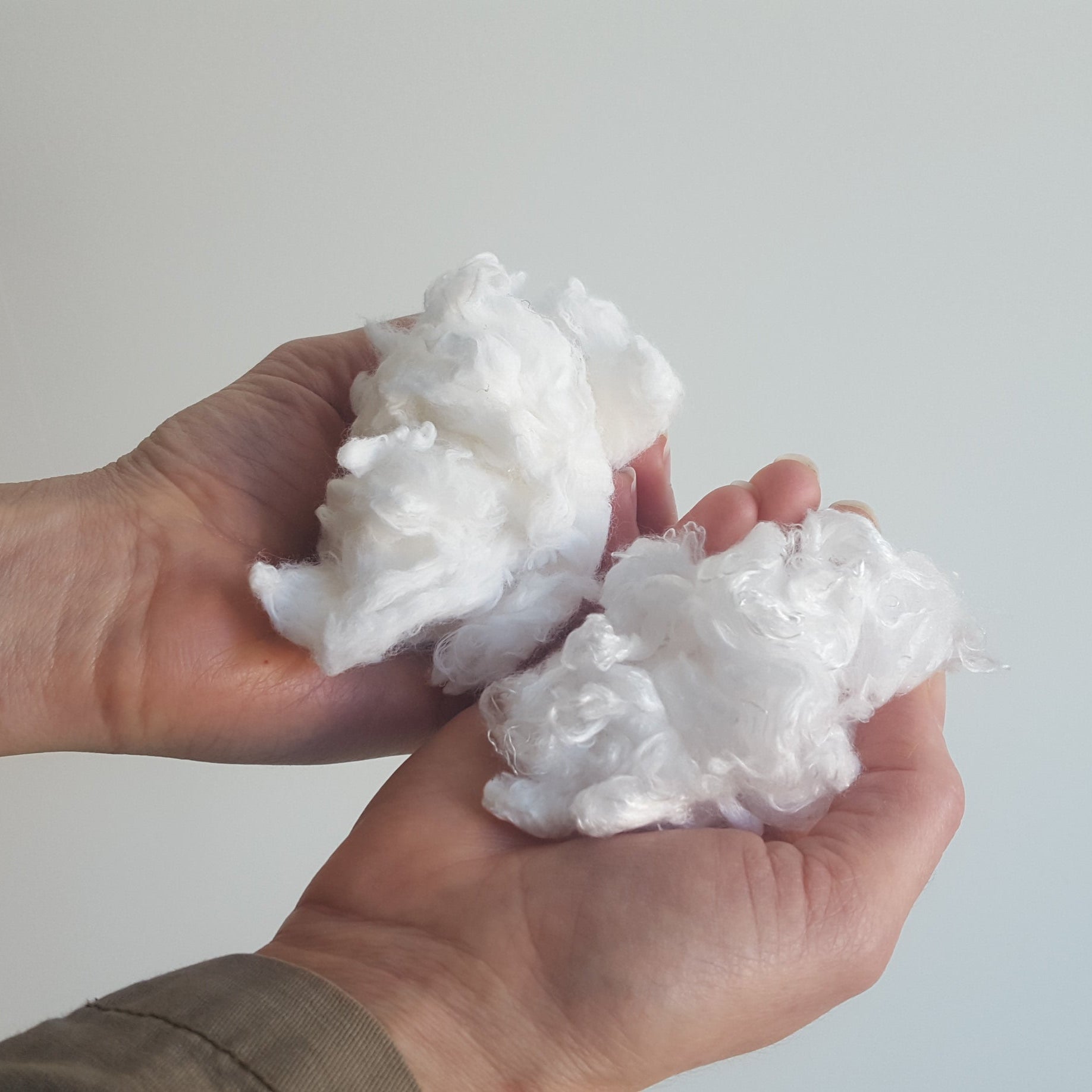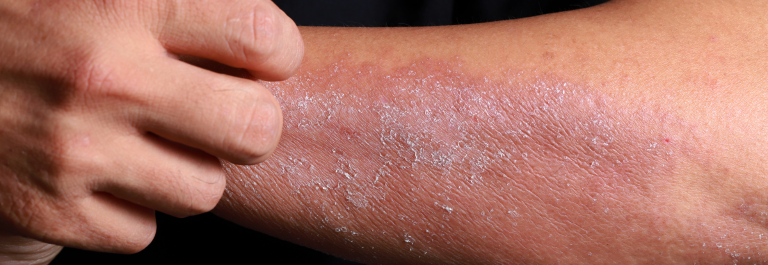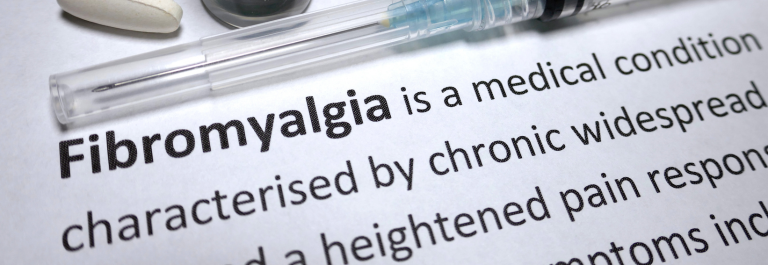Your skin is an impressive organ, providing a protective layer between you and the outside world. For some people, however, environmental factors can lead to allergic skin rashes, flaring your immune system and triggering a vast array of symptoms ranging from itchiness to swelling and sores.
Throughout this post, we'll explore everything you need to know about:
-
The leading causes of common skin allergies
-
Key allergic reaction symptoms to look out for
-
Natural and effective treatment methods for an allergic skin rash
Learn more about how allergies might impact your skin health today.
Common Skin Allergies
Allergic reactions can manifest in many ways, whether you're coping with itchy bumps, redness, or severely dry skin. But how do you know exactly what's triggered your skin rash?
Let's have a look at some common culprits:
Contact Dermatitis
Contact Dermatitis is a common variety of eczema triggered when the skin comes into direct contact with specific environmental irritants or allergens.
Typical symptoms of contact dermatitis include:
-
Redness
-
Itchy skin
-
Severely dry skin
-
Swelling
-
Blisters
-
A stinging or burning sensation
There are two different types of contact dermatitis, which each work in slightly different ways:
Allergic Contact Dermatitis
Allergic contact dermatitis is a hypersensitivity reaction to specific environmental allergens such as specific soaps, laundry detergents, metals (often nickel), topical medications, foods, and fabrics (such as latex).
In the case of allergic contact dermatitis, when your skin's barrier comes into contact with an allergen, the body's immune system falsely perceives these substances as a 'threat,' flooding your bloodstream with histamine and other defensive chemicals, which in turn drive an inflammatory response.
In rare cases, an allergen won't trigger a skin rash until the skin is also exposed to the sun's UV rays. This condition is caused by photoallergic contact dermatitis and might occur with products such as sunscreen or perfume, causing a delayed reaction.
Irritant Contact Dermatitis
On the other hand, Irritant contact dermatitis does not involve the body's internal allergic reaction process.
Instead, this skin rash is caused by repeated exposure to irritating or harsh substances that damage your skin's barrier, such as acid, bleach, hair dyes, or strong chemical solvents.
These irritants gradually weaken your oily protective skin layer, causing symptoms such as dryness, itching, and redness.
Atopic Dermatitis
Atopic dermatitis is the most common form of eczema. It is characterized by dry, itchy patches of scaly skin, which typically develop across the hands, face, inside your elbows, behind your knees, and the neck.
Due to the phenomenon of the atopic march, people with eczema often have a family history of allergies. Unlike contact dermatitis, triggered by direct skin contact with allergens, an atopic dermatitis flare-up may be caused by inhalant allergens such as pollen (linked to hay fever symptoms), dust mites, and pet dander from dogs or cats.
Acute Urticaria
Acute urticaria (otherwise known as hives) is characterized by red, raised bumps that spread all across the body, most often the torso, throat, arms, and legs. You may also notice that the little red bumps are ring-shaped and have a lighter center.
Most commonly, hives are triggered by environmental allergens or a bodily infection. For example, some people may experience hives in response to certain medications, such as penicillin or ibuprofen. Insect bites can also trigger urticaria.
Treating An Allergic Skin Reaction
Coping with allergies of any kind can feel overwhelming sometimes - whether your new make-up products have caused your face to swell or you're trying to decipher precisely which foods are causing your eczema to flare. It can feel like a constant game of catch-up!
Thankfully, if you or loved ones experience skin allergies, there are many steps you can take to find fast relief from your painful rash today. We've got some tips to get you started:
Consult an Allergist
One of the best ways to get to the root of your skin allergy is to begin allergy testing with a trained medical professional.
Typically, this will involve a range of blood and skin prick tests to help identify exactly which substances are causing your skin to flare.
For many people, getting a diagnosis is a positive step towards regaining more control over your health and clearing up confusion.
Wear Breathable Clothing
When coping with an itchy rash, there's nothing worse than wearing scratchy, tight clothes.
To give your skin the best chance of healing, we recommend wearing loose, breathable garments made from soft, anti-itch fabrics.
For example, our Remedywear™ clothing range has been specially designed using a combination of soft, silky TENCEL™ with anti-bacterial zinc to create the best eczema clothing that can be worn all day or all night for soothing relief.
Try out the Long Sleeve Shirt for Adults or Kids and the Remedywear™ Pants for Adults or Kids for the best full-body relief from constant scratching, especially to help you get a good night's rest.
Use A Soothing Moisturizer
If you've ever had an itchy allergic skin rash, you'll likely know how impossible it seems to resist the urge to scratch!
Unfortunately, scratching at your skin can worsen your allergy symptoms, causing micro-ruptures in your skin's barrier leading to additional moisture loss. To give your dry skin a boost of hydration, we recommend moisturizing generously twice a day or as often as you find helpful to soothe your itchiness.
The Organic Manuka Skin Soothing Cream is an excellent solution for this, teeming with anti-bacterial and anti-inflammatory ingredients such as 16+ New Zealand Active Manuka honey and deeply hydrating olive oil and beeswax. Rub this buttery balm gently into your itchy skin for instant relief.
Combat Allergic Skin Reactions Today
Follow these tips to help combat your troublesome allergy symptoms today, soothing even the most aggravated skin while taking your health into your own hands.










